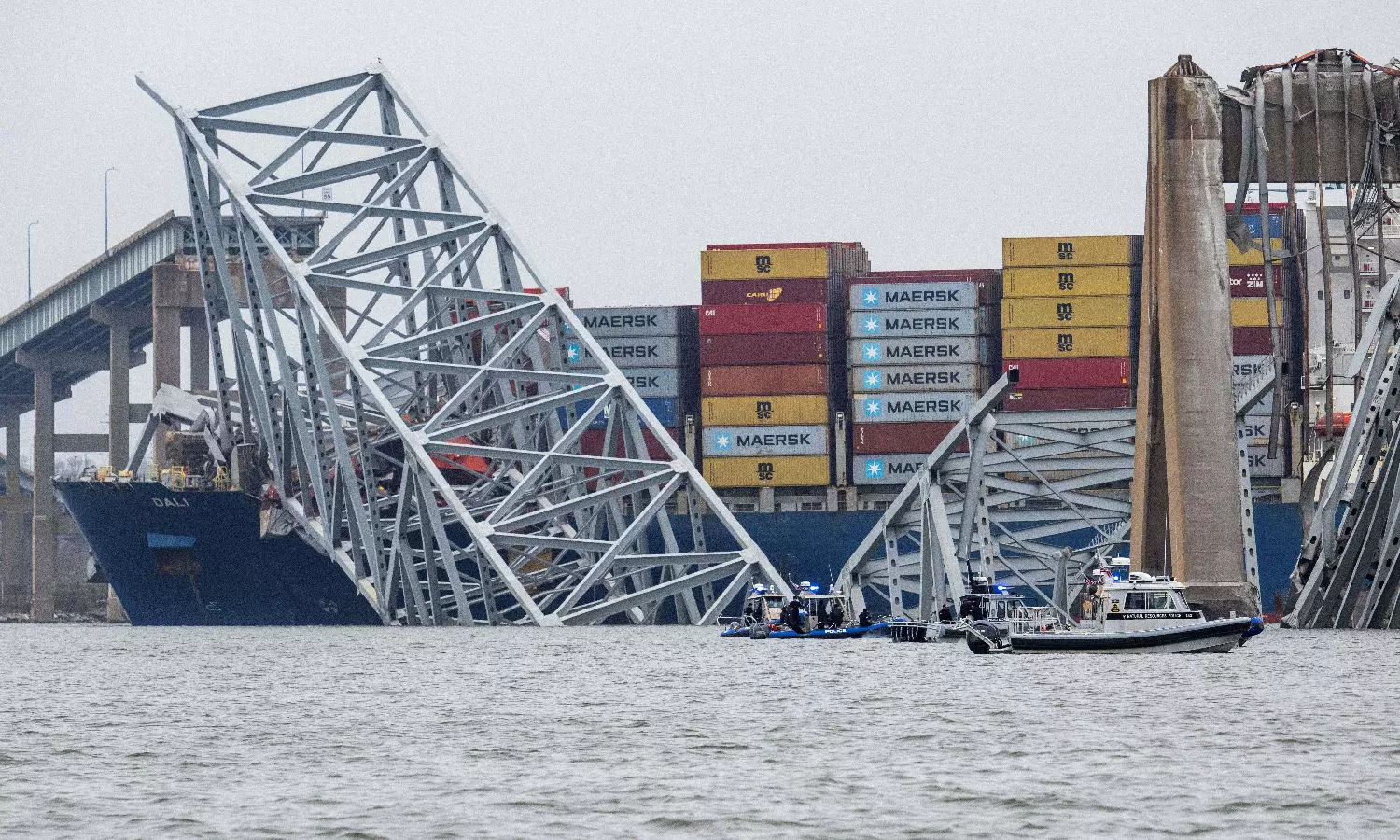DC Edit | Blow to US as iconic bridge falls

The unthinkable occurred in a Singapore-registered giant container ship MV Dali, almost 300 metres long and half laden against a capacity of 10,000 containers, ramming into a landmark 2.6 km bridge in Baltimore, described by a US official as “one of the cathedrals of American infrastructure”, and bringing it down.
The scene may have come straight out of clever computer graphics-designed Hollywood horror movie as the cargo vessel, with an all-Indian 22 crew, lost power and drifted with the spring tide of a near full moon night.
The experienced port pilot tried everything including a hard left turn and dropping anchor but was powerless to control the 15-kph drift into a pylon of the Francis Scott Key Bridge. Six men on the night shift filling potholes on the bridge perished in the cold waters of the Patapsco river while two were rescued.
The saving grace of another man-made disaster was that the captain had given out a “Mayday” call and warned city officials in time to stop all traffic on the bridge which, on an average day, sees around 34,000 vehicles cross it.
It was gracious of US President Joe Biden to have acknowledged the quick thinking of the pilot and crew who, in such circumstances, would otherwise have been pilloried for causing such an unimaginable tragedy. The US government has also offered to rebuild the bridge, but that may take years.
If one went by 50-year global records of bridge mishaps, this collapse is perhaps only a minor tragedy in terms of lives lost, but what it has done to the Port of Baltimore, a major export gateway for cars and trucks, which is now closed indefinitely and is an important north-south artery for the northeast region, is immeasurable.
Apart from deciding who is liable for the losses, there are huge lessons to learn from the tragedy about the general safety of long span bridges that may tend to come apart in forceful collisions. A statistic to take in is that, of 35 major bridge disasters recorded in 55 years from 1960, as many as18 happened in the United States.
Engineers may stress the need for pillars and pylons with blocking mechanisms to deflect like fenders. But would they be useful enough against a force such as that of a heavy ship, its gross tonnage at just over 91,000 tonnes, ramming it like this?

